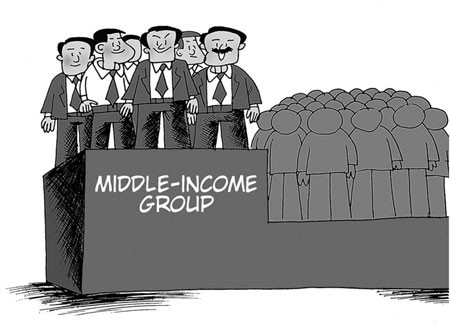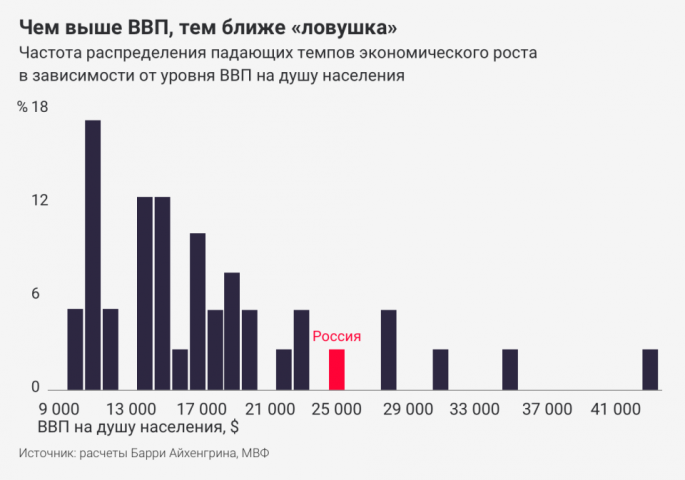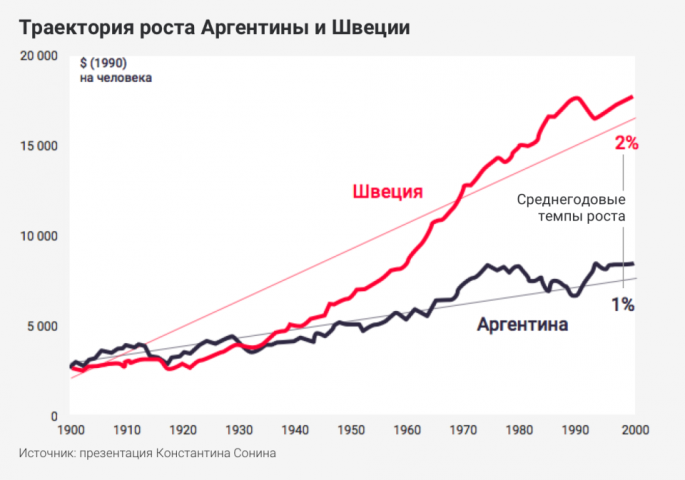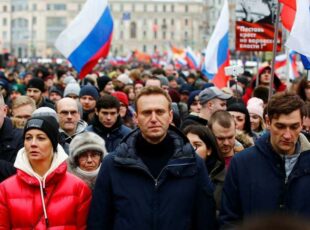Russia trapped
Why do economists fear middle income more than a crisis?

Yevgeny Karasyuk
Economists have long warned that Russia could stumble into the middle-income trap. But these days it seems less a risk than a fait accompli: years of high oil prices have made the country relatively prosperous, but there is no clear path to further economic growth. “We are in the middle income trap,” said former Finance Minister Alexei Kudrin in June, who once noted that the country had “choked on its desire to succeed.” A review published last Friday by Renaissance Capital touches on the same point: Russia, which until recently had managed to avoid the snare, has fallen into it headfirst. But why is “middle income” so dangerous and why is it considered a trap?
The middle-income trap is defined as the period of a country’s transition from poverty to prosperity, when per capita GDP stops growing or grows but very slowly. Economists love this figure of speech because it can be applied to any economy. But more often than not, it is used in relation to developing countries when they lose one of their prime advantages on the road to greater prosperity: cheap labour.
Countries that fail to create an investment climate, develop a middle class as a source of internal demand and diversify exports during the boom period are most at risk. According to Vladimir Mau, rector of the Russian Presidential Academy of National Economy and Public Administration, in practice the trap leads to a situation in which it is “unprofitable to produce anything but services that are not exported and raw materials.”
The problem has been the subject of academic research since the middle of last century. US economists Walt Rostow and Alexander Gerschenkron probed it in varying degrees in the 1950s and 60s, respectively. No one went as far as UC Berkeley Professor Barry Eichengreen. According to his calculations, rapid economic growth slows down on attaining per capita GDP of $11,000 (PPP in 2005 prices). Even if this barrier is overcome, a country risks falling into another trap at the level of $15-16,000—and chances are it will remain there for a long time.

Frequency distribution of falling rates of economic growth depending on the level of GDP per capita Russia
GDP per capita, $
Source: Barry Eichengreen, IMF
Barry Eichengreen and his colleagues Kwanho Shin of Korea University and Dongyun Park of the Asian Development Bank, believe that countries are better placed to sidestep the trap if they remain open to international trade, maintain a high level of domestic consumption (more than 60% of GDP), keep inflation under control and do not undervalue the national currency. Better still if a country has relatively few senior citizens and plentiful university graduates (an insufficient but necessary condition for developing hi-tech exports). Interestingly, Eichengreen does not link the risk of falling into the trap to a country’s political system, in particular the degree of authoritarianism.
In 2012, Russia could have avoided the trap, surmised Renaissance Capital at the time, comparing the country with its BRIC colleagues and highlighting its advantages in most of the above criteria: “Russia looks much better in terms of trade openness, domestic consumption, low and stable inflation, and less currency undervaluation and income inequality.” In 2013, according to Mau, the country’s stagnant economy was already in the trap (although at the time he considered it “the result of the successful policy of the last 15 years, not the result of degradation”).
Russian economists no longer talk about avoiding the trap, only about how to get out of it
Russian economists no longer talk about avoiding the trap, only about how to get out of it (while continuing to keep institutional change and economic restructuring at arm’s length). Not for nothing do some describe the middle-income pitfall as the “2 percent trap”: year-on-year economic growth at the level of 2 percentage points effectively means the country is treading water.
According to the IMF, per capita GDP in Russia now exceeds $25,000 (PPP – Purchasing Power Parity)—which, according to Eichengreen, is more than adequate for long-term stagnation. According to Yevsei Gurvich, head of the Economic Expert Group, Russia’s economy could remain stagnant for a long while, with growth limited to 1-1.5%. In its World in 2050 report (published in February), PwC sees Russia with 2.1-2.6% growth over the next 35 years.
It seems that the middle-income trap worries economists even more than the current recession and descent into poverty. One possible explanation is that today’s economic woes will eventually bottom out, while the prospect of not much more than modest growth is prompting anxious talk about the future.

$ (1990) per person
Source: Konstantin Sonin
Professor Konstantin Sonin of Chicago University and the Higher School of Economics fears that Russia may repeat the fate of Latin America, particularly Argentina, which he compares with Sweden (a century ago the two countries’ GDP growth was almost identical). If anything threatens modern Russia, believes the economist, it is the prospect of spending the next half-century as Argentina has the previous one, interweaving brief periods of prosperity with long cycles of stagnation and deterioration.
This article was first published in Slon



